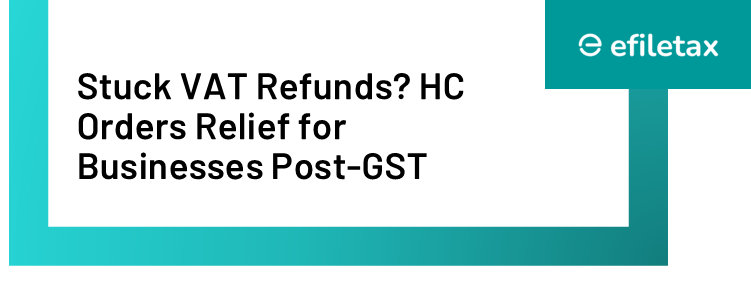
VAT Refund Directed After Adjustment Due to Lack of Mechanism Post-GST: HC Ruling
The transition from VAT to the Goods and Services Tax (GST) regime in India left several businesses grappling with unresolved tax refunds. A recent judgment by the Calcutta High Court in Aparnaa Sarees (P.) Ltd. v. State of West Bengal [R.V.W. 266 of 2024] has directed the refund of VAT amounts held by the revenue department, marking a crucial precedent for businesses awaiting similar claims.
Background of the Case
The applicant, Aparnaa Sarees (P.) Ltd., had a refund claim from the pre-GST VAT regime. Part of this refund had already been adjusted against their VAT liabilities, but a significant portion remained with the tax authorities. With no clear mechanism under GST for refunding excess VAT, the applicant sought judicial intervention for the release of the remaining amount.
Key Takeaways from the Judgment
- Lack of Refund Mechanism Post-GST: The court observed that once GST replaced VAT, there was no structured process to handle refunds for amounts collected under VAT laws.
- Judicial Intervention Required: The applicant moved a review petition, requesting a modification of the previous ruling to explicitly direct the refund of the outstanding amount.
- Adjustment of Previous Payments: The court ruled that the department should refund the remaining balance after deducting amounts already adjusted against past VAT dues.
- Interest on Delayed Refund: The judgment upheld the Division Bench’s directive to include interest on the refundable amount to compensate for the delay.
- Timeline for Compliance: The revenue department was ordered to process the refund within 12 weeks, ensuring timely relief to the taxpayer.
Legal Implications & Business Impact
The ruling underscores the importance of legal clarity in tax transitions and establishes that tax authorities cannot indefinitely hold pre-GST refunds due to procedural gaps. It provides relief for businesses facing similar issues and sets a precedent for addressing pending VAT refunds.
For businesses struggling with pre-GST tax credits or refunds, this judgment strengthens the case for seeking judicial redressal. Consulting a tax expert can help determine the best course of action in reclaiming such dues.
Conclusion
The Calcutta High Court’s verdict in this case highlights a significant legal gap in the transition from VAT to GST. By directing the refund of VAT amounts held by the department, the judgment ensures that businesses are not unfairly deprived of their rightful dues. As more cases emerge, similar judicial interventions may be necessary to provide comprehensive relief to affected taxpayers.